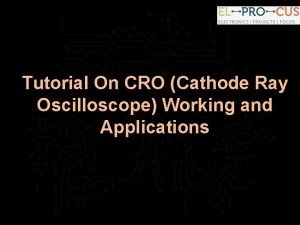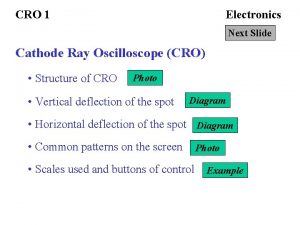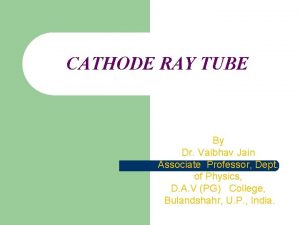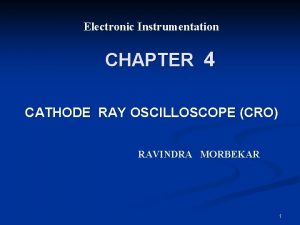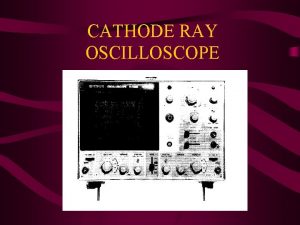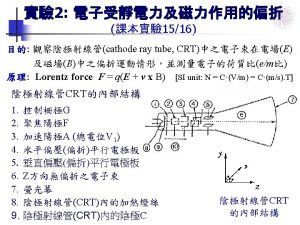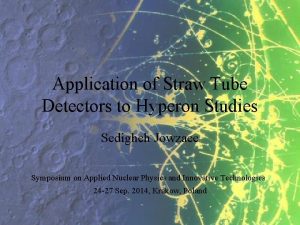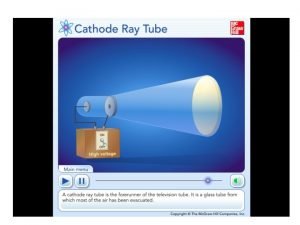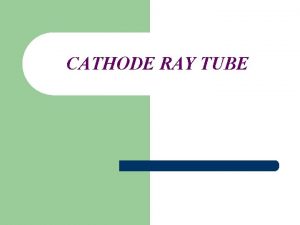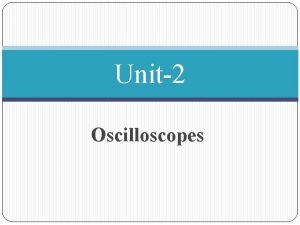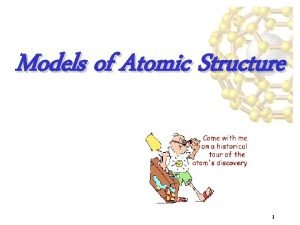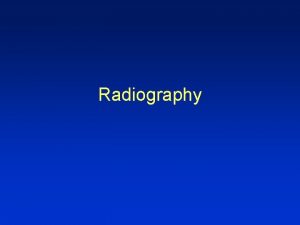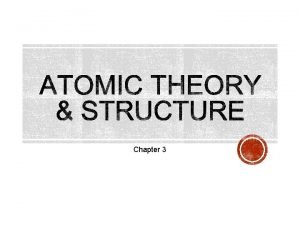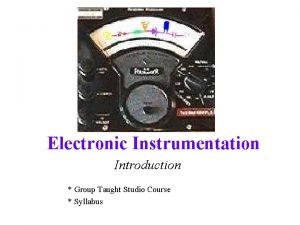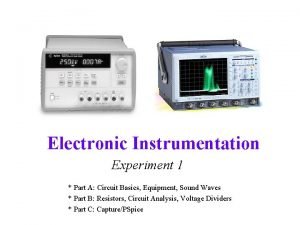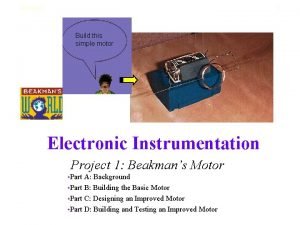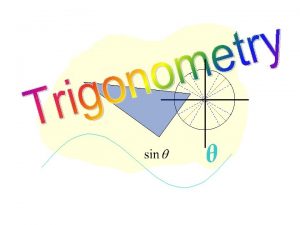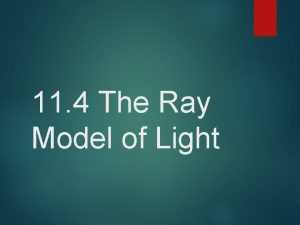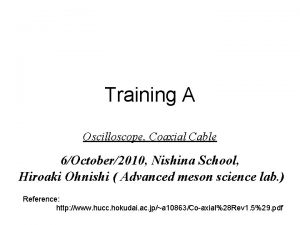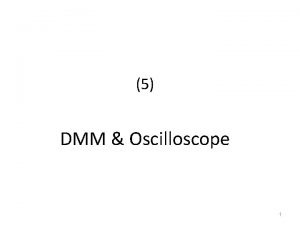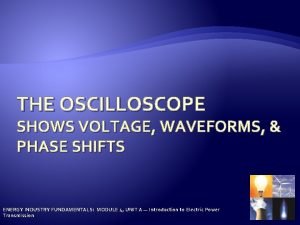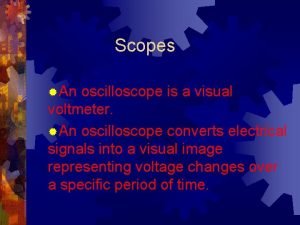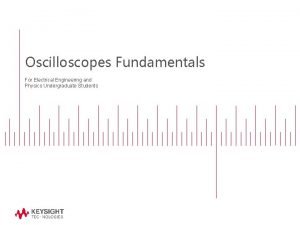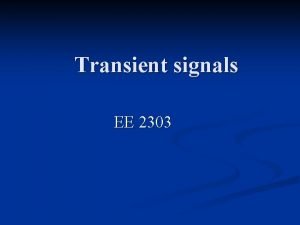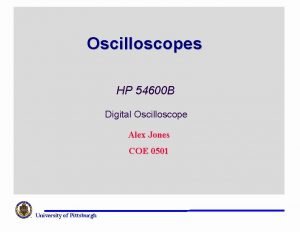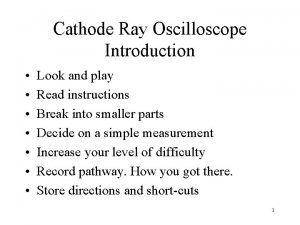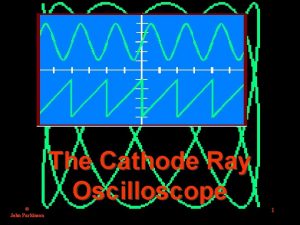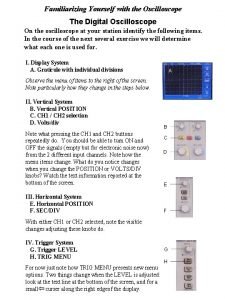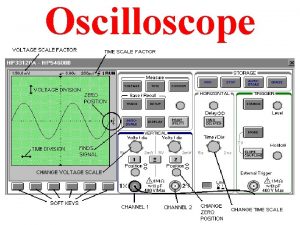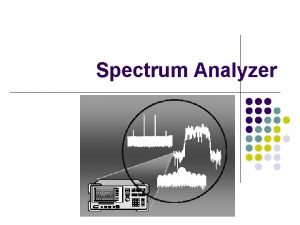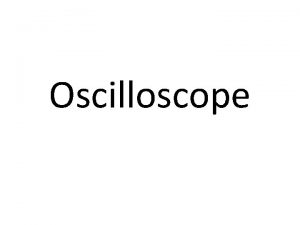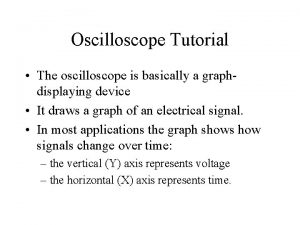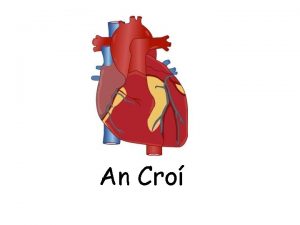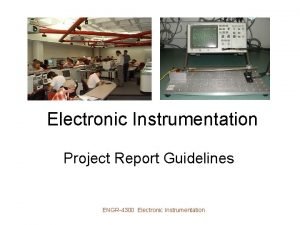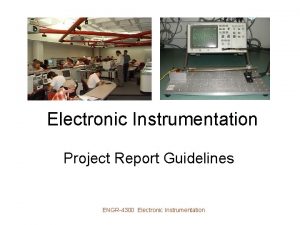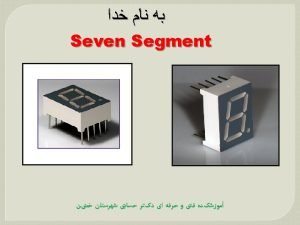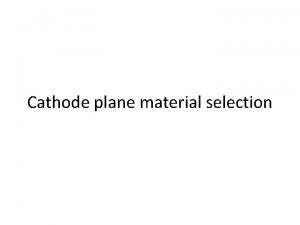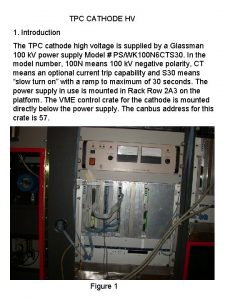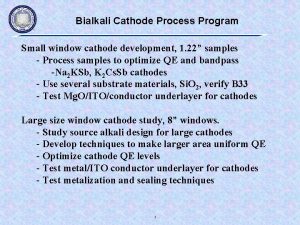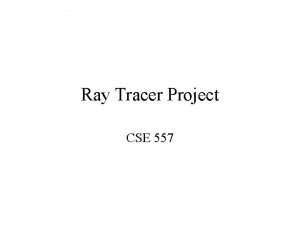Electronic Instrumentation CHAPTER 4 CATHODE RAY OSCILLOSCOPE CRO


































- Slides: 34

Electronic Instrumentation CHAPTER 4 CATHODE RAY OSCILLOSCOPE (CRO) RAVINDRA MORBEKAR 1

Contents Introduction 4. 1 Block diagram of the Cathode-Ray Oscilloscope 4. 2 Cathode-Ray Tube 4. 3 CRT control unit 4. 4 vertical deflection system 4. 4. 1 vertical amlifier 4. 5 Horizontal deflection system 4. 5. 1 Basic Sweep Generators (Time Base) 4. 5. 2 UJT Sweep Generator 4. 5. 3 Trigger Sweep 4. 6 Trigger pulse circuit 4. 7 Delay Line 2

• • 4. 8 Passive voltage probes for CRO 4. 9 Input Attenuator • • 4. 9. 1 Uncompensated Attenuator 4. 9. 2 Switchable Input Attenuator 4. 10 Horizontal Amplifier 4. 11 Dual Trace CRO 3

INTRODUCTION: The cathode-ray oscilloscope (CRO) is a multipurpose display instrument used for the observation, measurement , and analysis of waveforms by plotting amplitude along yaxis and time along x-axis. CRO is generally an x-y plotter; on a single screen it can display different signals applied to different channels. It can measure amplitude, frequencies and phase shift of various signals. Many physical quantities like temperature, pressure and strain can be converted into electrical signals by the use of transducers, and the signals can be displayed on the CRO. A moving luminous spot over the screen displays the signal. CROs are used to study waveforms, and other time-varying phenomena from very low to very high frequencies. The central unit of the oscilloscope is the cathode-ray tube (CRT), and the remaining part of the CRO consists of the 4

4. 1 Block diagram of CRO 5

Components of the CRO The CRO consists of the following: n (i) CRT n (ii) Vertical amplifier n (iii) Delay line n (iv) Horizontal amplifier n (v) Time-base generator n (vi) Triggering circuit n (vii) Power supply 6

4. 2 Cathode Ray Tube 7

4. 2 Cathode Ray Tube 8

4. 2 Cathode Ray Tube Electron Gun assembly n Deflection Gun Assembly n Fluroscent Gun Assembly n Glass Envolope and Base of the tube n 9

Electron Gun: n n n In the electron gun of the CRT, electrons are emitted, converted into a sharp beam and focused upon the fluorescent screen. The electron beam consists of an indirectly heated cathode, a control grid, an accelerating electrode and a focusing anode. The electrodes are connected to the base pins. The cathode emitting the electrons is surrounded by a control grid with a fine hole at its centre. The accelerated electron beam passes through the fine hole. The negative voltage at the control grid controls the flow of electrons in the electron beam, and consequently, the 10

4. 3 CRT Control Circuits 11

CRT Control Unit Intensity n Focus n Astimatism n Vertical Position and Horizontal Position n 12

4. 4 Vertical Deflection System CRO probe n Input selector n Input Attenuator n Vertical Amlifier n 13

4. 4 Vertical Deflection System 14

4. 4. 1 Vertical Amlifier 15

4. 5 Horizontal Deflection System 1. 2. 3. Basic Sweep generator(Time Base) UJT Sweep Generator Triggered Sweep 16

4. 5. 1 Basic Sweep generator(Time Base) 17

4. 5. 2 UJT Sweep Generator 18

4. 5. 3 Triggered Sweep 19

Block Diagram Of Trigger Circuit 20

4. 6 Triggered Pulse Circuit 21

4. 7 Delay line 22

4. 7 Delay line 23

4. 8 Passive Voltage Probe Under condition balance we have: R 1×(Cin+C 2)=Rin ×C 1 R 1 /w (Cin+C 2) = Rin /w C 1 R 1 C 1= Rin (Cin+C 2) 24

4. 9 Input Attenuator 25

4. 9 Input Attenuator 26

4. 9 Input Attenuator 27

4. 9. 1 Uncompesated Attenuator 28

4. 9. 2 Switched Input Attenuator 29

4. 10 Horizontal Amplifier 30

4. 11 Dual Trace CRO 31

4. 11 Dual Trace CRO 1. A only 2. A and B chopped 3. A and B ulternate 4. A and B added 5. A Vs B (X-Y mode) 6. B only 32

4. 11 Dual Trace CRO 33

K N A H T U O Y 34
 Cro working
Cro working Cathode ray tube symbol
Cathode ray tube symbol Dr. vaibhav shah
Dr. vaibhav shah Cathode ray tube
Cathode ray tube Cathode ray oscilloscope function
Cathode ray oscilloscope function Cathode ray oscilloscope animation
Cathode ray oscilloscope animation Crts ryles tube
Crts ryles tube Diagram of cathode ray tube
Diagram of cathode ray tube Cathode ray tube tracker
Cathode ray tube tracker Cathode-ray tube
Cathode-ray tube Goldstein discovery of canal rays
Goldstein discovery of canal rays Advantages of cathode ray tube
Advantages of cathode ray tube Cro formula
Cro formula Cathode ray tube
Cathode ray tube Raster scan display and vector scan display
Raster scan display and vector scan display Cathode-ray tube
Cathode-ray tube James chadwick
James chadwick Electronic instrumentation rpi
Electronic instrumentation rpi Rpi electronic instrumentation
Rpi electronic instrumentation Stepper motor full step sequence
Stepper motor full step sequence Unit circle tan 30
Unit circle tan 30 Ray model of light
Ray model of light Ray casting algorithm
Ray casting algorithm An electronic is the electronic exchange of money or scrip
An electronic is the electronic exchange of money or scrip Electronic field production
Electronic field production Oscilloscope coaxial cable
Oscilloscope coaxial cable Agilent oscilloscope basics
Agilent oscilloscope basics In an oscilloscope tube what is the purpose of the heater
In an oscilloscope tube what is the purpose of the heater Dmm oscilloscope
Dmm oscilloscope Phase shift oscilloscope
Phase shift oscilloscope Voltmeter vs oscilloscope
Voltmeter vs oscilloscope Electrical engineering
Electrical engineering Transient signal oscilloscope
Transient signal oscilloscope High pitch oscilloscope
High pitch oscilloscope Hp54600
Hp54600
